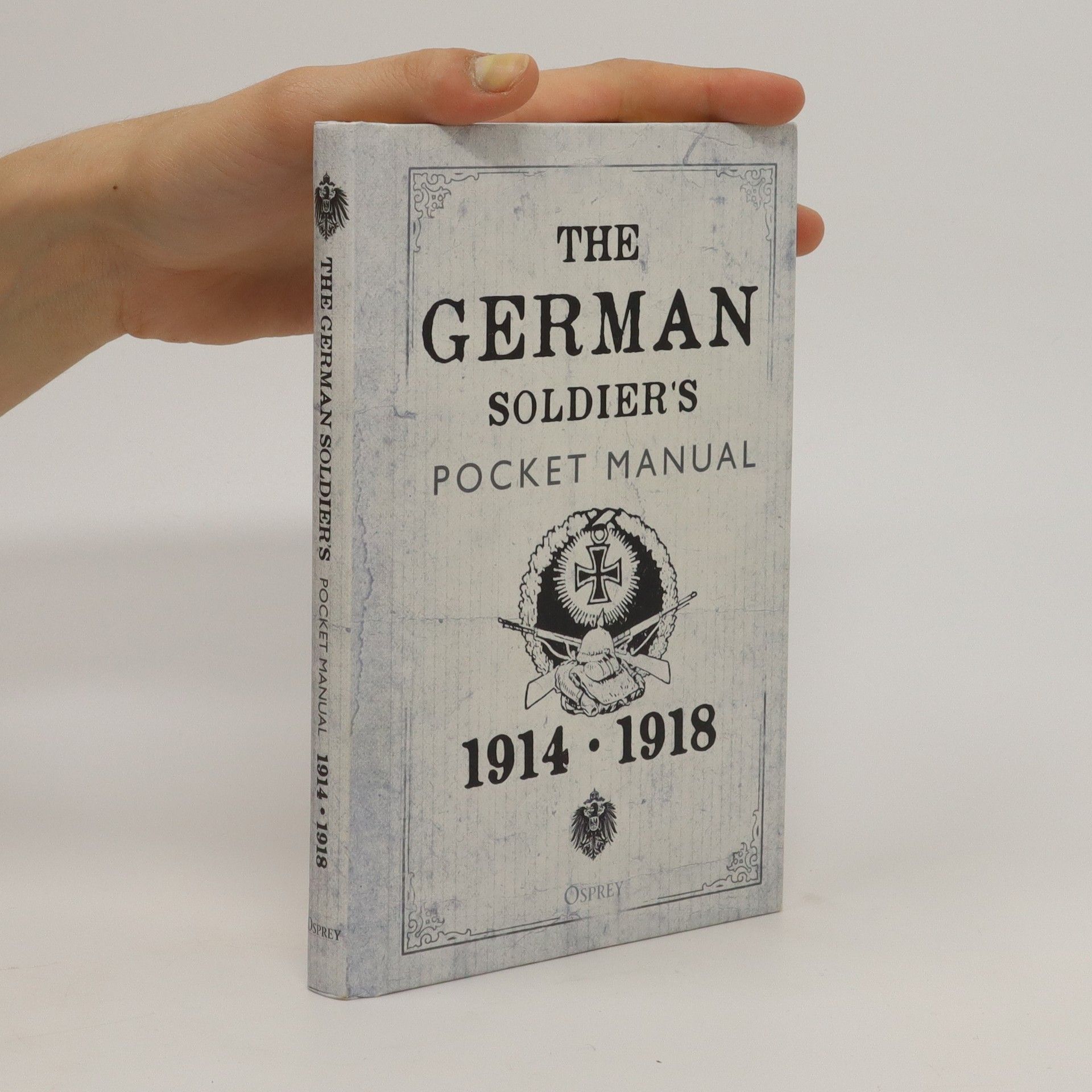This illustrated study pits the Kaiser's troops against their British opponents during the climactic year of 1918 on the Western Front. Launched on 21 March 1918, the Spring Offensive saw Germany used veteran, highly trained assault troops and innovative assault tactics to encircle and outflank the British and Empire forces manning the front line, hoping to force the French to seek terms and hand victory to Germany. After this attempt stalled, the Allied armies mounted a series of offensives during the so-called 'Hundred Days', actions that pushed the Kaiser's forces back and prompted the demoralized German High Command to sue for peace. In this book, Stephen Bull shows how the British Army on the Western Front fared as it survived the Spring Offensive and then went on the attack during the Hundred Days. While the picked units spearheading the German offensive were well-trained and -armed but short of supplies, the regular divisions following in their wake would prove much less resolute. The fighting would see both sides' forces tested to the limit and beyond, as initial German progress gave way to stalemate and the Allies then took the offensive, driving the Germans back. Featuring specially commissioned artwork and mapping, carefully chosen archive photos and expert analysis and commentary, this study assesses the fighting men on both sides during the climactic months of fighting on the Western Front in 1918.
Stephen Bull Book order






- 2024
- 2022
Ta bogato ilustrowana książka, w której wybitny znawca tematu Stephen Bull analizuje całą gamę mundurów, wyposażenia osobistego, broni, medali i odznaczeń, stanowi kompendium wiedzy o transformacji umundurowania niemieckiego żołnierza w okresie od rozpoczęcia działań wojennych we wrześniu 1939 roku do bezwarunkowej kapitulacji Niemiec w maju 1945 roku. Po zakończeniu I wojny światowej, pokonana i znacznie okrojona liczebnie, niemiecka armia wprowadziła ujednolicone wzory umundurowania i wyposażenia. Wybuch wojny w 1939 roku spowodował dalsze adaptacje mundurów i insygniów, a coraz częstsze stosowanie kamuflażu i przyspieszone tempo rozwoju broni doprowadziło do powstania nowych typów odzieży i wyposażenia osobistego. Wojska, takie jak piechota górska, wojska pancerne i saperzy, otrzymały charakterystyczne elementy umundurowania i ekwipunku, a stale rozszerzające się fronty, na których walczyła niemiecka armia, od Afryki Północnej po rosyjskie stepy, sprawiły, że konieczne stało się pospieszne opracowanie odzieży i wyposażenia dostosowanych do działań w różnych warunkach klimatycznych. Ponadto dotkliwe niedobory surowcowe oraz wymogi związane z ubraniem i wyposażeniem wielomilionowej armii wymusiły uproszczenie wielu elementów umundurowania i wyposażenia oraz coraz częstsze stosowanie do ich produkcji materiałów zastępczych. Książka ta ilustruje ewolucję, jaką w ciągu prawie sześciu gorzkich lat wojny totalnej przeszło uzbrojenie i wyposażenie żołnierza armii niemieckiej.
- 2022
- 2021
German Army Uniforms of World War II
A photographic guide to clothing, insignia and kit
- 256 pages
- 9 hours of reading
Set against the backdrop of post-World War I Germany, the book explores the evolution of military uniforms and equipment in response to lessons learned from trench warfare. It details the transition to standardized uniforms under Nazi influence in the 1930s, adaptations prompted by the 1939 war outbreak, and the incorporation of camouflage. As the war progressed, new medals and specialized uniforms emerged for various troops, while material shortages led to simplifications and the use of substitutes, reflecting the diverse climates and conditions faced by the German Army.
- 2020
English Civil War
- 176 pages
- 7 hours of reading
The period of the English Civil War began in 1640 and lasted until the restoration of the monarchy 20 years later. Author Stephen Bull outlines the main battles and notable events in the war, the organisation and structure of the opposing Royalist and Parliamentarian armies, their commanders, weapons and tactics, equipment, uniforms and armour.
- 2018
This is the first Pocket Manual to be dedicated to the German Army in the First World War, with chapters comprising of complete documents or extracts drawn from two major sources: the German Army of 1914 - 1918 itself, or the intelligence sections of other armies. It describes the new tactics and units developed by the German army during the war, including the myths surrounding Stormtrooper units. These new methods used were a result of interaction between the opposing forces and incremental in their appearance. Nevertheless the new ideas were hugely influential and important not only to the German army but to others as well, including British and American forces. Utilising a wide range of sources, including various pamphlets and manuals that were produced throughout World War I, this fascinating pocket manual gives a German perspective to World War I.
- 2009
The secret agent's pocket manual 1939-1945
- 160 pages
- 6 hours of reading
This manual builds up an authentic picture of the Allied spy.
- 2009
Most wars have had some element of espionage and subterfuge, but few have included as much as the Second World War, where the all-embracing nature of the conflict, new technology, and the battle of ideologies conspired to make almost everywhere a war zone. The occupation of much of Europe in particular left huge areas that could be exploited. Partisans, spies and saboteurs risked everything in a limbo where the normal rules of war were usually suspended. Concealment of oneself, one's weapons and equipment, was vital, and so were the new methods and hardware which were constantly evolving in a bid to stay ahead of the Gestapo and security services. Silent killing, disguise, covert communications and the arts of guerrilla warfare were all advanced as the war progressed. With the embodiment and expansion of organisations such as the British SOE and the American OSS, and the supply of special forces units which operated behind enemy lines, clandestine warfare became a permanent part of the modern military and political scene. Perhaps surprisingly many of these hitherto secret techniques and pieces of equipment were put into print at the time and many examples are now becoming available. This manual brings together a selection of these dark arts and extraordinary objects and techniques in their original form, under one cover to build up an authentic picture of the Allied spy.
- 1991
An Historical Guide to Arms & Armour
- 224 pages
- 8 hours of reading
